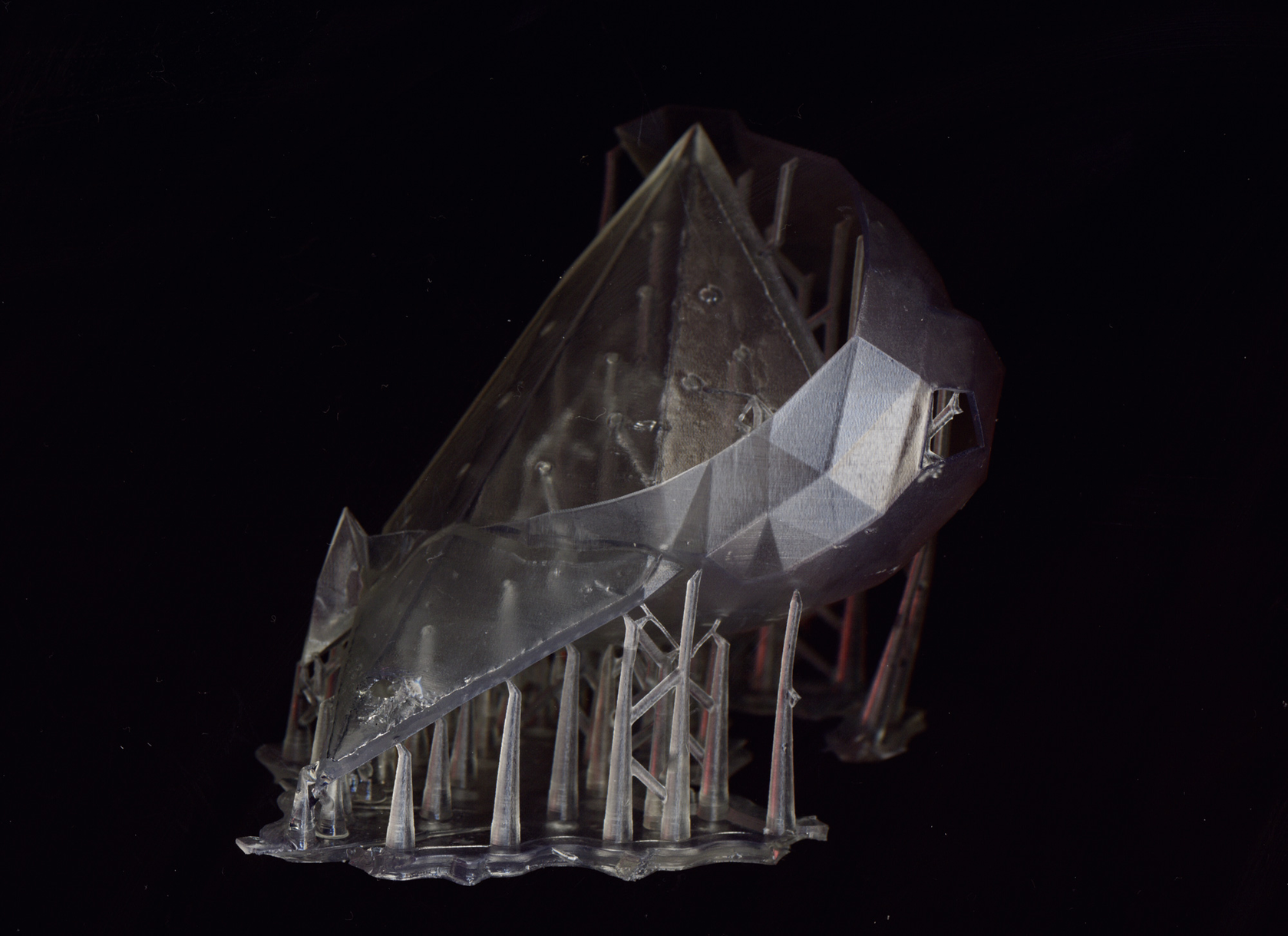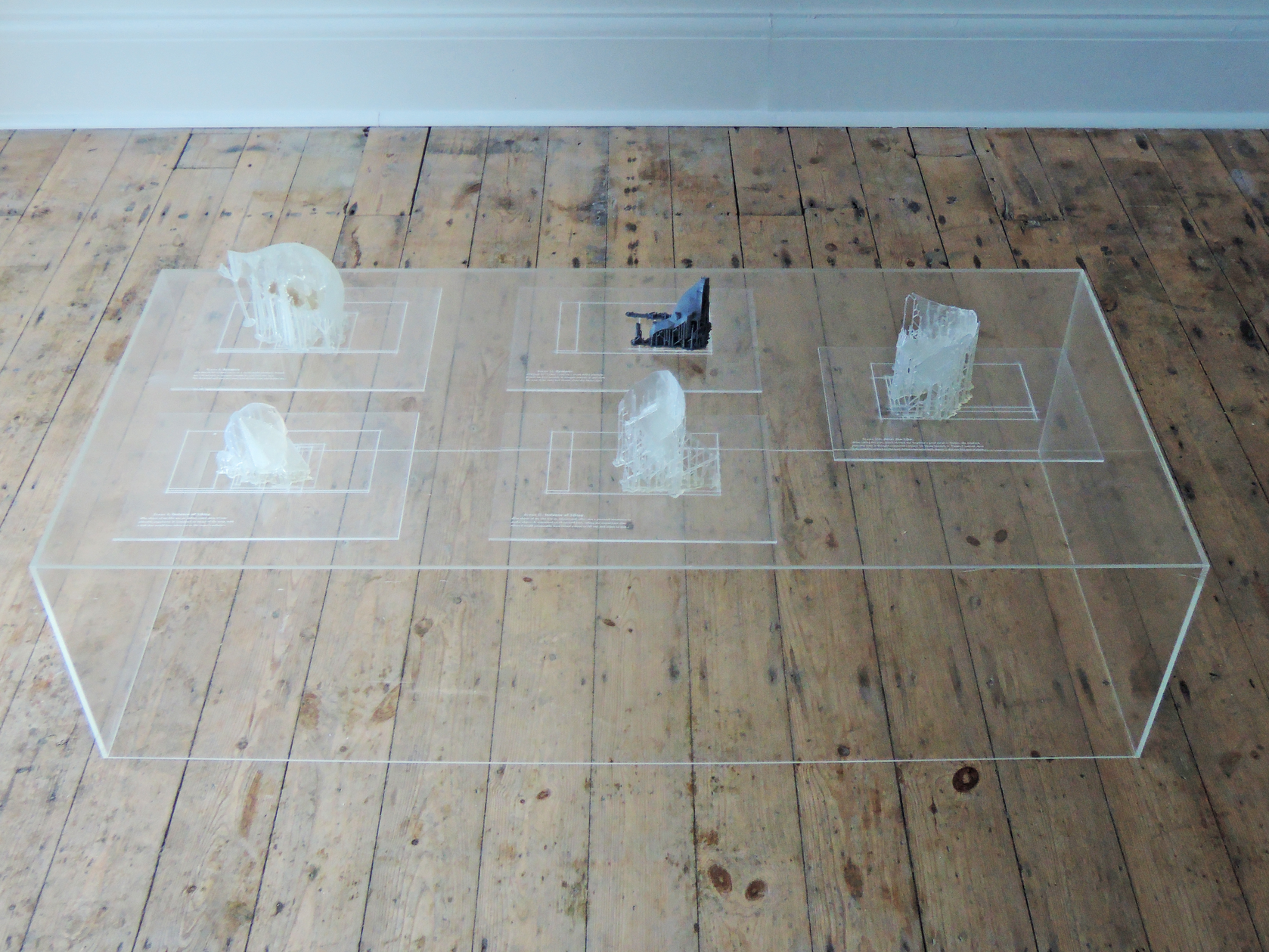↑↑ Dissensual Places
Jesse Josua Benjamin, 2016, Thesis MRes Arts and Cultural Research,, University of Brighton. https://www.researchgate.net/publication/309464910
Theory Part 2:
To extend Rancière's dissensual place further, I removed the resulting stereolithic prints further from the conventional setting of algorithmic system interfaces; namely into a gallery context. Through observation, I focused on how visitors would react and attribute meaning to the artifacts. To add a discursive prompt, I took a lead from Rancière's extensive discussion of the dissensual in the theater of Edward Gordon Craig1. Accordingly, I introduced prosaic accounts of the activity of "Liking" that I had rendered into the interfacial artifacts.
Notably, exhibition visitors employed re-occuring terms stressing spatial and temporal qualities (“world”, “cities”, “terrain”, “how long is that?” etc.). This was also accompanied by a vocabulary stressing attributes of agency on the part of the represented computational processes (“in motion”, “free-playing”, “delivery”, “would exist even if we didn’t” etc.) as well as user-activity (“the data that we set in motion”, “us”, etc.). Accordingly, I suggest that future RtD into the void of interpretability between human experience and algorithmic system take up and extend the concept of dissensual places.
Methodology Part 2:
(4) The resulting prints represented specific instances of my "Liking" activity and the accompanying computational processes as rendered through my custom software.
(5) In exhibition settings, I chose to supplement the prints with short prosaic texts, etched into acrylic sheets with outlines of the original interface, providing bases for the prints. Additionally, I created an animation (also featured on the landing page of this exposition), that cycled through the computational processes of three different interfacial artifacts (or "Scenes"). I observed the visitors and found that the settings evoked attributions of spatiotemporal qualities and human as well as computational agency.






